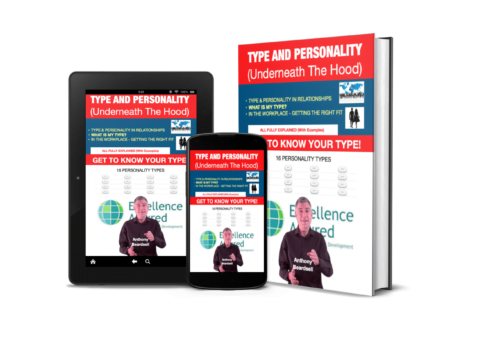Personality Types in the workplace. Many employers use Personality profiling in order to help with staff recruitment, retention and development.
The key is to consider Job Scope, Roles, Duties, and the Key Attributes required for positions in order to draw up a desired personality profile or perhaps profiles that ideally may suit the role.
The next step is to find someone with a personality profile that matches.
Using Personality Types in the workplace. My advice (as a performance coach, trainer and former senior manager):
- Recruitment – Pay close attention to the Dominant and Inferior functions. Match these aspects first.
- Retention, training, coaching – Bear in mind that personalities are not fixed. After all, science tell us that the brain is malleable, it changes shape according to how we use it.
- Use the dominant, auxiliary, tertiary, inferior functions aspect of the personality type profiling to draw up a Coaching/Training Plan where needed for staff in position or when recruiting slightly outside of the perfect profile match.
- Use the 4 informal (and simple) questions provided in this book (see page 25) to identify likely type. Over twenty plus years of using these questions I have found the answers to be highly reliable.
- Match to type, bearing in mind the dominant (what they do most (and probably are most comfortable doing), auxiliary, tertiary and inferior(what they do least and are probably least comfortable doing) functions.
- Workers will enjoy jobs where their duties match their skills and sit comfortably with their personality.
- Happy workers mean loyal workers. For businesses and organisations this means improved productivity, lower staff turnover, lower recruitment costs. What would it be like, if the next time that you walk into a performance review meeting, a personal development review, whatever you call it, and you could actually fairly well assess whether someone would like to be stroked and praised or whether they just knew that they were doing a good job. Is that something that you would be interested in?
What would it be like for you if you could have an informal interview with a person that you were going to be interviewing the next day for a senior position in your company and you were able to know whether they would be the right person for the job just by listening to them and paying attention to the words that they use in the conversation that you have? Is that something that you might be interested in?
Personality types are run at an unconscious level. They are represented in our language. They are represented in our gestures, they are represented in the way that we act, the way that we behave.
When using personality profiling please bear in mind…..
Personalities do change over time.
Take the example of a young man:
He is is very physical, his car is very important to him. The things that are important to him at this stage in his life will certainly change as he becomes a Dad. He will suddenly find himself sitting on a chair that is about three feet high on the Parent Teachers Association discussing how important it is that children are in a relaxed learning environment. His interest will become much less about self and much more about other as he becomes a parent.
So, in other words our four parts of personality will change over time as we become mature. They are not fixed, which is why if you have ever previously taken some kind of Personality Type Assessment and then you do the same assessment again now you may find, that who you were is not who you are any more, you may have changed!
We can use Personality Type Assessments to make informal decisions at a frequently changing level about how to motivate individuals as they change over time.
They are the basis of our seeking of information, of our processing of information. And they are the basis of how we assist others to be motivated, to perform, to excel. They are a very important category of information in terms of how we can utilise our skills in working with other people.
See the four parts to personality
Up next>>>>>Jung’s four typologies at work


